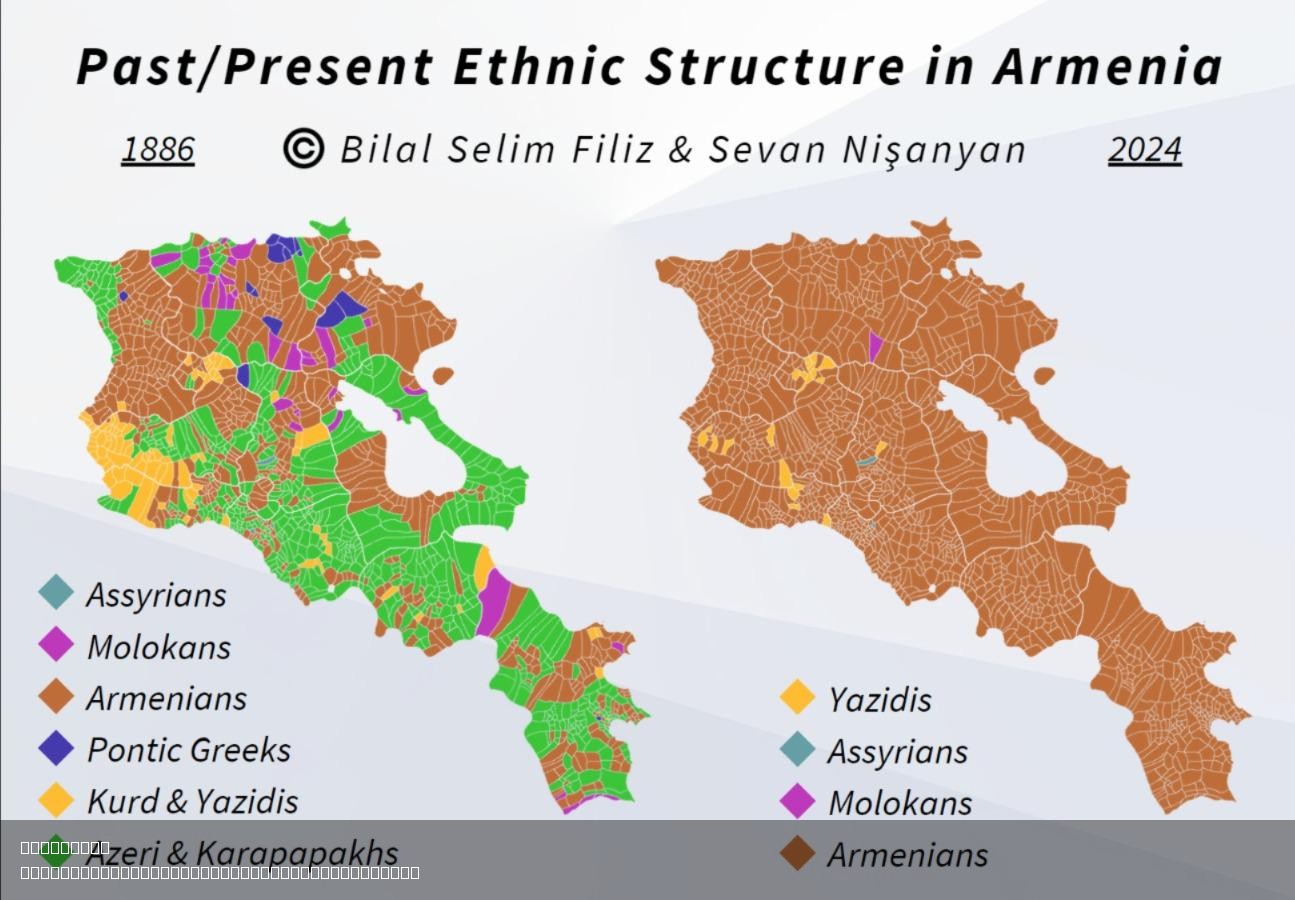Past Present Ethnic Structure in Armenia Map


David Chen
Data Visualization Specialist
David Chen is an expert in transforming complex geographic datasets into compelling visual narratives. He combines his background in computer science ...
Geographic Analysis
What This Map Shows
The "Past/Present Ethnic Structure in Armenia" Map provides an insightful visualization of the ethnic composition of Armenia over different historical periods. This mapping captures the shifts in ethnic groups within the country, illustrating how historical events, migration patterns, and cultural changes have influenced the demographic landscape of Armenia. Ethnic diversity and the historical context of these populations offer a deeper understanding of the nation’s identity and cultural heritage.
Deep Dive into Ethnic Diversity in Armenia
Armenia, a landlocked country in the South Caucasus region, boasts a rich tapestry of ethnic groups and cultural influences. Historically, it has been a crossroads for various civilizations, which has resulted in a complex ethnic structure. The predominant ethnic group in Armenia is the Armenians, making up approximately 98% of the population. However, the ethnic landscape is more nuanced.
Interestingly, the map highlights not only the Armenian majority but also the presence of ethnic minorities, including Yazidis, Russians, Kurds, and Assyrians. For instance, the Yazidi community, primarily residing in the Ararat region, is one of the country’s significant minority groups. Historically, they have faced challenges related to identity and assimilation, especially post-Soviet Union.
The demographic shifts illustrated in this map are significant. In the early 20th century, Armenia was home to a more diverse ethnic population, including significant numbers of Turks and Persians. However, the Armenian Genocide in 1915, the subsequent Soviet era, and the Nagorno-Karabakh conflict in the late 20th century catalyzed a dramatic transformation in the country’s ethnic composition. Many ethnic groups either fled or were displaced, resulting in a more homogenous Armenian population.
Moreover, the map also indicates urban versus rural ethnic distribution. Urban areas like Yerevan, the capital, have seen an influx of ethnic Armenians from rural regions, while historically mixed areas have become predominantly Armenian. This trend reflects broader patterns of urbanization and internal migration, reshaping the ethnic landscape further.
Regional Analysis
When examining the ethnic structure across different regions of Armenia, notable variations arise. For instance, the northern regions, particularly around the Tavush Province, have historically been home to ethnic minorities such as the Kurds and Russians. In contrast, the southern regions, especially around Syunik, have seen a significant Yazidi population, which is deeply tied to the cultural and religious practices unique to that area.
In urban areas, the capital Yerevan stands out as a melting pot of Armenian culture but also serves as a hub for ethnic minorities, including a small but vibrant Russian community. This urban environment fosters a unique blend of traditions and lifestyles, reflecting both historical and contemporary influences. Interestingly, the map shows how ethnic distribution has evolved due to political changes, economic factors, and social dynamics in these areas.
Moreover, the regions surrounding Nagorno-Karabakh present a unique case. The ethnic tensions and conflicts over this disputed territory have influenced migration patterns, leading to reduced populations of ethnic Azerbaijanis and increased settlement of ethnic Armenians. The map captures these complexities, depicting not only current demographics but also the historical context that led to such changes.
Significance and Impact
Understanding the ethnic structure of Armenia is crucial for several reasons. Firstly, it sheds light on the social fabric of the nation and how historical events have shaped its identity. Ethnic tensions and historical grievances can impact contemporary politics and community relations, making this understanding essential for fostering peace and reconciliation.
Moreover, the implications of these demographic shifts extend beyond cultural aspects. As Armenia integrates more into the global economy and seeks to strengthen its international ties, the recognition of its diverse ethnic composition can play a vital role in diplomatic relations. Understanding minority rights and cultural representation can enhance Armenia's efforts toward inclusivity and unity.
Looking ahead, the ethnic structure of Armenia may continue to evolve due to ongoing geopolitical dynamics, migration trends, and economic development. The current trends indicate a potential for increased urbanization, which may lead to further intermingling of ethnic communities. However, challenges remain, particularly in balancing national identity with the rights and recognition of minority groups. The insights from the "Past/Present Ethnic Structure in Armenia" Map will be essential for policymakers, researchers, and community leaders as they navigate these complexities in the years to come.
Visualization Details
- Published
- August 3, 2025
- Views
- 190
Comments
Loading comments...